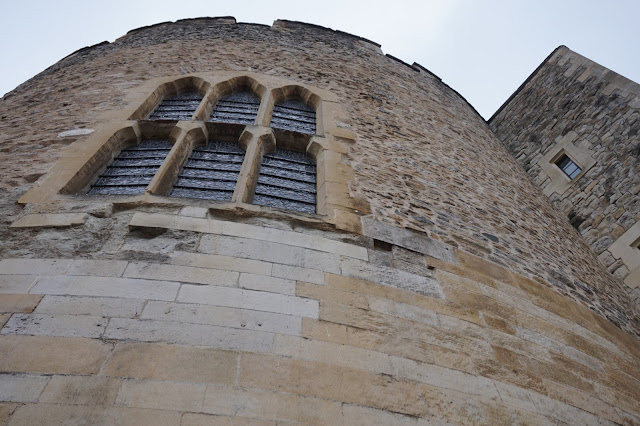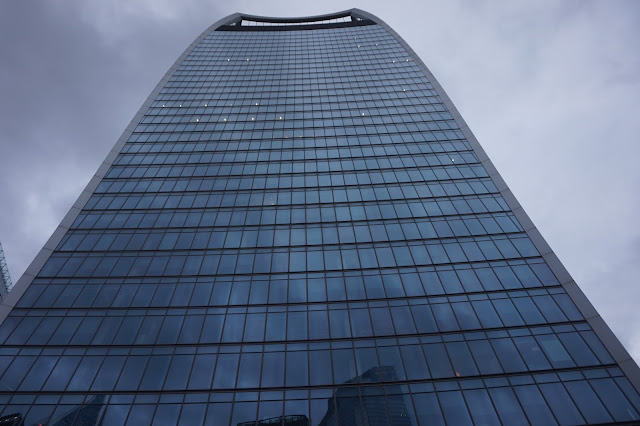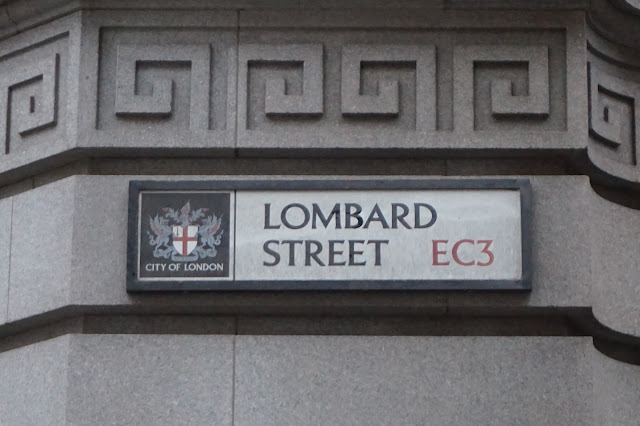 |
| Dee's copy of Cardano's Libelli Quinque (thanks to RCP London for permission to post) |
There were many fine lines that "my" three mathematicians (Cardano, Napier, and Dee) had to walk, due to the fact that the 16th century was a time of religious upheaval as well as a time when science and magic were not well-distinguished. Astrology especially seemed to be valued or censured depending on the whim of a given magistrate or ruler on any given day. And it is John Dee and his astrology that I will focus on in this post, though I could address the situations of all three here and also pull in religion, alchemy, and mathematics alongside astrology.
The book in the photo above was written by Cardano and owned by Dee, and it seems that Dee had this book as early as 1547 or 1548 when he was studying in Louvain in the Low Countries. Dee worked through this book so diligently that there is almost no page that is unmarked. Given what seem to be reworkings and corrections it may very well be that he was using this book to teach himself to do genitures (the horoscopes in the square format that you see in the image above).
Dee's father had worked hard at moving up in society both financially and in proximity to the court so that he could provide his son with an education and with connections. The elder Dee's fortunes fell spectacularly in 1553 and left John without the inheritance he should have had to sustain him, but his reputation as a scholar and his connections did hold up and provide him with patronage from the monarch (at times). A short recap from a previous post: King Henry VIII appointed John Dee as a Junior Founding Fellow of Trinity College, Cambridge. Dee's tutor, John Cheke, from his time as a student at St. John's College had also been tutor to Prince Edward, and once Edward became king, Cheke was a close aide to the king. Cheke brought John Dee into the upper echelons of the court where he was presented to the king. Dee made a gift to the king of two astronomical works that he had written while in Louvain, and the king provided Dee a (small) patronage.
 |
| Looking from the Royal Observatory at Greenwich in 2016 to where Greenwich Palace would have stood in the 1500s. |
Sadly, King Edward VI died in 1553 at the age of 15. His older sister Mary (aka "Bloody Mary") ascended the throne. Under her, in 1555, Dee was arrested for casting horoscopes of Mary, of her husband Philip, and of her sister Princess Elizabeth. He was charged with "calculating, conjuring, and witch-craft." He was initially imprisoned at Hampton Court Palace (portions of which that date to the Tudor era are shown in the five pictures below).
 |
| Hampton Court Palace (2016) |
 |
| Hampton Court Palace (2016) |
 |
| Hampton Court Palace (2016) |
 |
| Hampton Court Palace |
 |
| Hampton Court Palace (2016) |
The charge against Dee was increased to that of treason, and he was then sent on to the Tower of London for trial by the Privy Council. Though I haven't been able to find details of exactly where he was held in Hampton Court or in the Tower or how he was transported, it makes sense that he could have been taken by boat down the Thames from Hampton Court to the Tower, perhaps even through Traitor's Gate. Travel then was by river as much as possible, which was far easier and far safer than overland travel.
 |
| The Thames passing Hampton Court Palace (2016) |
 |
| Traitor's Gate, Tower of London |
 |
| Traitor's Gate, Tower of London |
 |
| Traitor's Gate, Tower of London |
 |
| Traitor's Gate, Tower of London |
 |
| Tower of London |
Dee eventually confessed to whatever the Privy Council wanted to hear and was cleared of charges of treason, but he was then turned over the "Bloody" Edmund Bonner, Bishop of London to be tried to for his religious beliefs. He was now imprisoned at Bonner's palace, which was located among the buttresses of the southwest side of St. Paul's Cathedral in London. He may have been held in the palace's coal house. Dee had been connected with Edward VI's protestant court, and to have been handed over to Bonner for religious questioning was a very dire situation indeed. It was later written of Bonner by protestant author John Foxe:
"This cannibal in three years space three hundred martyrs slew
They were his food, he loved so blood, he spared none he knew."
 |
| St. Paul's Cathedral - different structure than in Dee's day but the same site |
We don't know details of his questioning, what we do know is that Dee not only survived but, quite surprisingly, became closely attached to Bonner. The next we know of Dee is that he has become ordained into the Catholic clergy and was then a chaplain at St. Paul's under Bonner, in a position to interrogate others and closely attached to Bonner's household. Dee called Bonner his "singular friend" and remained committed to him even after Elizabeth had taken the throne and England was once again a Protestant nation, a time at which Bonner was stripped of his honors and held in Marshalsea Prison where he died. This association was to impact Dee the rest of his life and keep him from gaining appointments he might otherwise have had.
During his time of imprisonment, one book that Dee had with him was the
Mathemalogium of Andreas Alexander. Dee worked through this book meticulously, and obviously had time to do so, as his handwriting is much neater and easier to read than his writing in other books he owned. At the end of the book he writes the date and mentions Reverend Father Edmund Bonner, Bishop of London as "my singular friend." (My thanks to the Royal College of Physicians in London for permission to post the following three pictures.)
 |
| Dee's Marginalia in Alexander's Mathemalogium - note "manicule" (pointing hand) on the left. |
 |
| Last page of Dee's copy of Mathemalogium - with Bonner note |
 |
| "singularis amici mei" |
Despite having taken holy orders in the Catholic Church under Bonner, and despite having been arrested by Queen Mary for his astrological work, John Dee was appointed by Robert Dudley to use his astrological knowledge in order to select an auspicious date for Protestant Elizabeth's coronation. (So what's up here?! Is astrology OK or not? Is it science or is it sorcery? You may be requested by the court to use it, or you may be arrested, perhaps executed for doing so!) John Dee took on the task and set the date of January 15, 1559. On that date, chosen astrologically by Dee, Elizabeth was crowned queen at Westminster Abbey. Given her long and glorious reign, perhaps he was able to read the stars aright.
 |
| Westminster Abbey |
 |
| Westminster Abbey |
 |
| Westminster Abbey |
 |
| Westminster Abbey |
Dee was an adviser to Queen Elizabeth I. He is credited with having coined the phrase "British Empire," and he was high in Elizabeth's favor. But he never received an official position at court, which he was obviously holding out for, having been offered positions at the court of the French king and at the court of Holy Roman Emperor, Charles V. She had promised to double the pension that her brother Edward had provided to Dee, but this never happened. They were close enough that she visited him at his house at Mortlake (though never went inside) and that she called on him in questions of empire, navigation, alchemy, and signs in the heavens, and he may have done some spying for her during some of his travels on the continent.
One example of their interactions dates to 1577 when he was called upon to go to Windsor Castle in order to give advice about navigation and at which time he made the astonishing proposal that England should challenged Spain's claims to the New World. One element of this is that Dee believed that King Arthur had had colonies in the New World, and therefore Elizabeth had a right to reclaim this lost British Empire.
 |
| Windsor Castle |
 |
| Windsor Castle |
 |
| Windsor Castle - ER standing for Elizabeth Regina |
 |
| Windsor Castle - ER standing for Elizabeth Regina |
 |
| Windsor Castle |
But I need to bring this back around to his astrological work. While in Windsor he was also expected to elucidate the meaning of a comet that was causing hysteria throughout Europe. Those at court feared it might be an ill omen for the queen. Elizabeth herself asked Dee to speak to her of it. Though his words are not recorded, it is evident that he reassured her and encouraged her not to fear it. After this conversation, though Elizabeth's courtiers warned her to look away from the comet, she looked directly at it, saying, "
Iacta est alea" or "The die is cast." It may be that Dee had not only told her that the comet did not bode harm to her but rather was an omen of her rise among the rulers of Europe.
Though Queen Elizabeth I provided gifts to Dee from time to time, she never did appoint him to an official position at court nor provide him the pension she had promised. Despite the fact that astrology and alchemy were standard practices at the time, and despite the fact that Elizabeth herself dabbled in alchemy and requested astrologically-based advice from Dee, it seems Dee ended up a bit too far to the "occult" side of the fine line he was walking - especially once he began to practice "angel magic" and took on as his scryer Edward Kelley. Because of his increasingly dark reputation in later life (whether deserved or not) Elizabeth found it necessary to distance herself from Dee, and this great scholar, once renowned not only in England but throughout Europe, ended up dying in poverty and obscurity.


























































